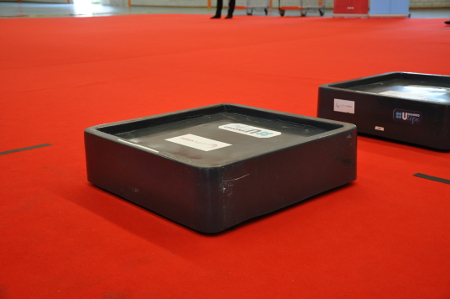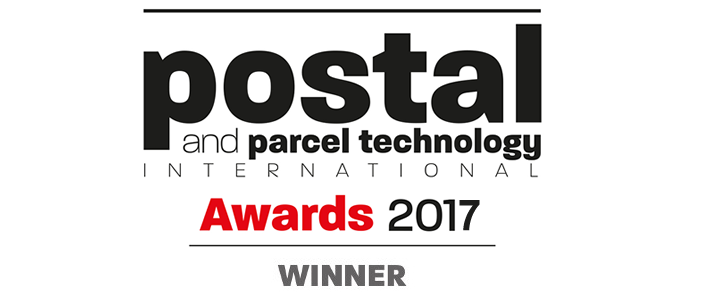Dutch automation specialist Prime Vision has enjoyed a busy year, with the realization of several innovative projects and record growth. In terms of financials, the group recorded sales of €16.1m (US$19m) in 2016, a 56% increase over the €10.3m (US$12.2m) recorded in 2015. This was largely attributed to the installation of Prime’s next-generation MMS automation platform for DHL’s hub in Obertshausen, Germany.
“We spend a lot of time and resources in R&D to prepare our business for tomorrow; innovations are fuel for the future,” explains Eddy Thans, CEO of Prime Vision. “This year’s increase in sales comes from the completion of core projects like the MMS system for DHL. We are currently working on another project for the company, which will also benefit us in the coming year.”

In terms of innovations, Prime Vision launched a new Reference Framework in October 2016 to help guide postal operators looking to implement the Internet of Postal Things (IoPT). The Reference Framework report provides guidance on the practical application of IoPT, with particular focus on track-and-trace capabilities, as well as live redirection and live collection/returns services. The report also tackles the potential application of IoT for autonomous robots and drones in the mail and parcel handling process. “The response to the IoPT Reference Framework was really interesting because it created a lot of intrigue from posts,” says Thans. “However, we found that the majority aren’t ready for it, which makes sense. You have to explore and evaluate the potential benefits and drawbacks of new technologies and solutions for your business. People have to get accustomed to new ways of working. Again, this is fuel for the future.”
The framework was followed by a partnership with Thinfilm to produce NFC (near-field communication) smart-packaging solutions for the mail and parcel industry, using printed electronics. Prime Vision leverages Thinfilm’s NFC tags – SpeedTap and OpenSense – to target increased mail/parcel security, enhanced e-commerce functionality and improved consumer communication. Each SpeedTap and OpenSense tag is uniquely identifiable and virtually impossible to clone.
Robotics and recognition In April 2017, Prime Vision began working with Delft Robotics to create advanced automated robotic solutions for the postal and logistics sector, with a particular focus on warehouses. Prime Vision combined its postal recognition technology with Delft’s highly flexible robotic arms and versatile 3D vision sensing capabilities, enabling the intelligent robotic systems to ‘look’ at their working environment and cope with product differences. This is particularly relevant for pick-and-place robots, which need to recognize each parcel type, grasp it accordingly and place it where required.
In May 2017, Prime Vision announced the launch of an object recognition solution capable of not only reading address labels, but also deciphering stamps, franking marks, logos and other images printed onto letters. In one demonstration, Prime Vision achieved a 99% read rate and almost zero error rate based on a test deck of Dutch stamps. “The development of the 3D vision and robotics side of the business has been great as we’ve seen an influx of new people, taking us to record levels of employees. We’ve even had to move offices. However, Prime Vision forms a lot of partnerships with tech startups to help develop new offerings and this can bring its own challenges as startups can be very inexperienced when it comes to the operational side of the postal sector. We offer high-quality systems with 24/7 support and we have to combine those capabilities with their intellect,” says Thans.
Later the same month, Prime Vision and Unmanned Life gave a live demonstration of their innovative autonomous sorting solution, which uses robotic unmanned vehicles (UV) or ‘rovers’ that behave similarly to worker bees. Swarming algorithms determine the actions of the bees, enabling them to identify, assess, sort and physically transport items to their dispatch locations. The ‘pop-up’ sorting center can be deployed in any building in less than a day, and can be scaled up or down as required. The UVs require no other equipment to operate and are safe to work alongside human workers.
“The autonomous sorting center has really sent out shockwaves through the market,” adds Thans. “We held the demonstration in July, and although we don’t have an operational sorting center yet, we have proved that it is feasible. We’re now working on making it robust so that posts can think of it as a flexible way of setting up a new sorting center. We are aiming to have a fully working solution by summer 2018.”
Most recently, Prime Vision unveiled its Projection Sorting solution, a device that reads the address or barcode of a package as it leaves the sorter, and then beams the relevant roll cage number directly onto its surface, helping to improve the efficiency of the manual sorting process (see page 17).
The future
Going forward, Prime Vision sees huge potential in the application of artificial intelligence to the logistics industry and sorting systems, but for now the key to success lies in building closer and more agile relationships with posts and carriers as they face the challenges associated with reshaping their business. “The cooperation level between supplier and the customer is increasing because posts are downsizing their business to offset declining letter volumes,” says Thans. “The supplier can fill that void, but it means having to be flexible. Fixed-term contracts and six-day delivery dates are becoming old-fashioned. The future is about building agile relationships on both sides.”
Supplier of the Year Shortlist:
- Beumer
- Fives intralogistics
- Vanderlande
An interview with the award winner – Eddy Thans, CEO:
Postal Technology International Awards Winners 2017 – Supplier of the Year


